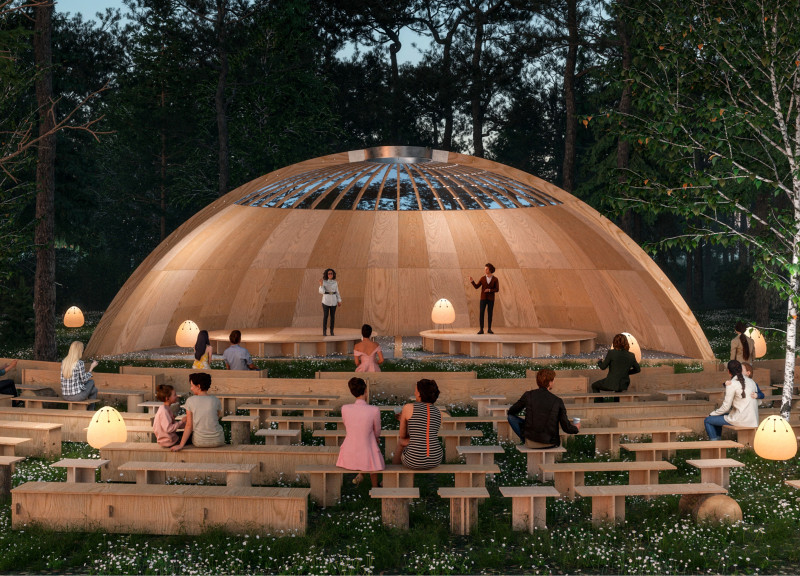5 key facts about this project
Representing a blend of modernist principles and local architectural traditions, the building stands as an example of how contemporary design can harmoniously integrate with its environment. The architectural vision prioritizes sustainability and inclusivity, ensuring that the project accommodates a diverse range of activities and users. The design promotes social interaction through open spaces and communal areas that invite people to gather, converse, and enjoy shared experiences.
As one explores the structure, several key architectural features become apparent. The facade showcases a mix of materials that are both aesthetically pleasing and functional. High-performance concrete meets sustainable timber, providing a balance between durability and warmth. Large expanses of energy-efficient glass invite natural light into the interior while seamlessly connecting indoor spaces with the outdoor environment. The careful selection of materials supports thermal comfort while embodying the essence of place, drawing upon local resources and traditions.
The layout of the project is meticulously designed, with an emphasis on clear circulation paths that guide users through various zones. Public areas are easily accessible, encouraging community engagement, while private spaces are thoughtfully integrated to ensure privacy when needed. The diversity of spaces—from flexible event areas to quiet reflection zones—demonstrates an adaptable approach to design, accommodating both large gatherings and solitary moments of contemplation.
In terms of unique design approaches, the project employs passive design strategies that optimize energy use. The architecture benefits from orientation considerations, allowing for natural ventilation and sunlight to reduce reliance on artificial heating and cooling systems. Rainwater harvesting systems and green roofs are integrated into the design, enhancing the building’s sustainability and connection to nature. Such features not only address environmental concerns but also promote a lifestyle that values ecological stewardship.
Moreover, the project actively engages with its community by creating an environment that encourages public participation and creativity. Art installations and local crafts incorporated into the building's design reflect the cultural narratives of the region, reinforcing a sense of identity and belonging among users.
As you contemplate the various elements of this architectural endeavor, it becomes clear that the project exemplifies a considered approach to design that balances modern needs with timeless principles. The dialogues between spaces, materials, and people elucidate the depth of thought that has gone into its conception.
For those interested in exploring this architectural project further, detailed presentations of the architectural plans, sections, and design illustrations are available for review. These resources provide additional insights into the careful planning and innovative ideas that have shaped this remarkable achievement in architecture. Engage with the project’s presentation to unravel more about the intentions behind its design and the architectural elements that make it a compelling study in contemporary architecture.


 Jack Ryan Lehane
Jack Ryan Lehane 























